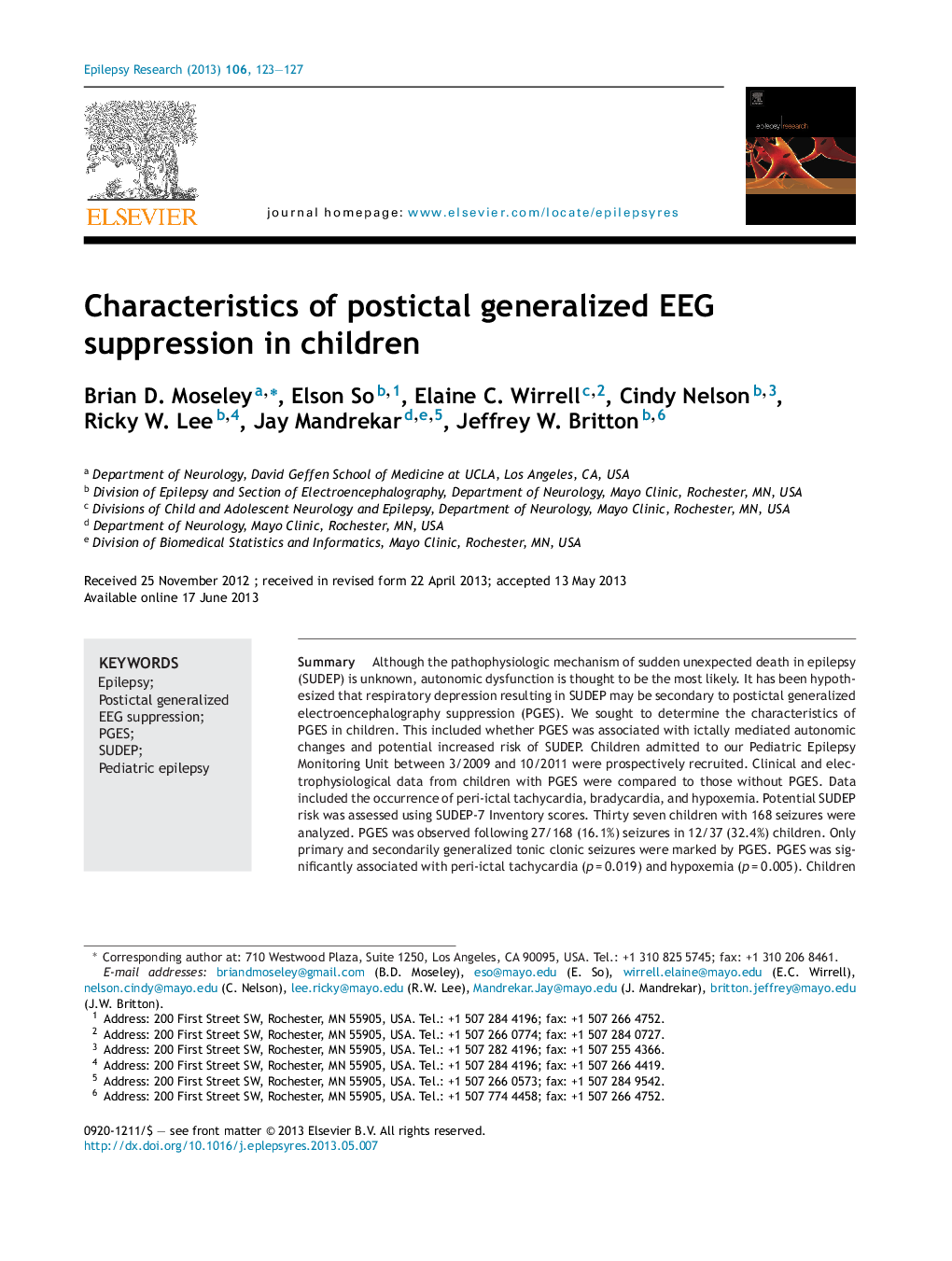| Article ID | Journal | Published Year | Pages | File Type |
|---|---|---|---|---|
| 6015737 | Epilepsy Research | 2013 | 5 Pages |
Abstract
Although the pathophysiologic mechanism of sudden unexpected death in epilepsy (SUDEP) is unknown, autonomic dysfunction is thought to be the most likely. It has been hypothesized that respiratory depression resulting in SUDEP may be secondary to postictal generalized electroencephalography suppression (PGES). We sought to determine the characteristics of PGES in children. This included whether PGES was associated with ictally mediated autonomic changes and potential increased risk of SUDEP. Children admitted to our Pediatric Epilepsy Monitoring Unit between 3/2009 and 10/2011 were prospectively recruited. Clinical and electrophysiological data from children with PGES were compared to those without PGES. Data included the occurrence of peri-ictal tachycardia, bradycardia, and hypoxemia. Potential SUDEP risk was assessed using SUDEP-7 Inventory scores. Thirty seven children with 168 seizures were analyzed. PGES was observed following 27/168 (16.1%) seizures in 12/37 (32.4%) children. Only primary and secondarily generalized tonic clonic seizures were marked by PGES. PGES was significantly associated with peri-ictal tachycardia (p = 0.019) and hypoxemia (p = 0.005). Children with PGES had significantly higher SUDEP-7 Inventory scores than those without PGES (4.2 ± 1.3 versus 2.8 ± 1.4, p = 0.007). SUDEP-7 scores were not significantly different between children with and without peri-ictal tachycardia (3.4 ± 1.3 versus 2.5 ± 1.6, p = 0.12), bradycardia (4 ± 2 versus 2.9 ± 1.4, p = 0.45), or hypoxemia (3.4 ± 1.5 versus 2.4 ± 1.3, p = 0.051). Based on our data, PGES is not rare in children. Children with PGES may be at greater risk for SUDEP as measured by the SUDEP-7 Inventory.
Keywords
Related Topics
Life Sciences
Neuroscience
Neurology
Authors
Brian D. Moseley, Elson So, Elaine C. Wirrell, Cindy Nelson, Ricky W. Lee, Jay Mandrekar, Jeffrey W. Britton,
